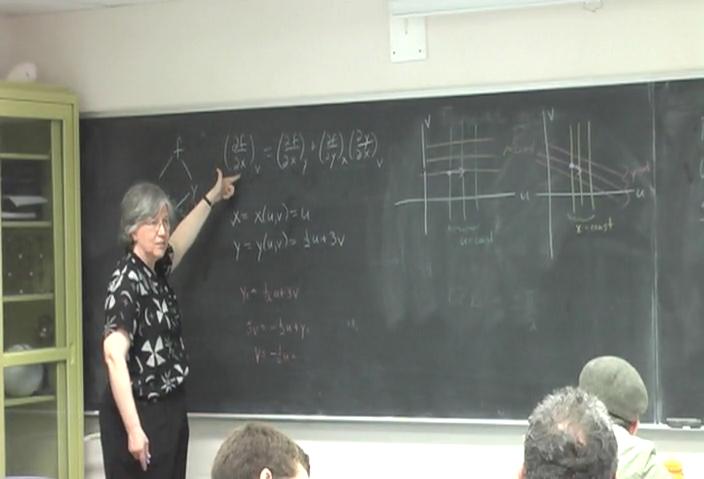You are here: start » activities » guides » inconstantuvlines
Navigate back to the activity.
Constant Lines in the U-V Plane: Instructor's Guide
Main Ideas
- Partial derivatives
- Change of variables
- Coordinate systems
Students' Task
Estimated Time: 10 minutes
Students are asked to draw lines of constant $u$ and $v$ in a $u,v$ coordinate system. Then, in the same coordinate system, students must draw lines of constant $x$ and constant $y$ when
$$x(u,v)=u $$ and $$y(u,v)=\frac{1}{2}u+3v \; \; . $$
Prerequisite Knowledge
- Students should have some experience working with expressions that are dependent on several variables.
Props/Equipment
- Tabletop Whiteboard with markers
Activity: Introduction
This activity needs little introduction. Write the equations for $x$ and $y$ on the blackboard and then draw a blank $u$ and $v$-coordinate graph. Then ask:
Draw on your small white boards several lines of constant $u$ and lines of constant $v$.
Most students will draw this quickly. Then, ask:
On another $u$ and $v$ coordinate graph, draw constant lines of $x$ and constant lines of $y$.
This typically takes students a little more time.
Activity: Student Conversations
Activity: Wrap-up
After drawing the constant lines of $x$ and $y$ in the $u,v$ coordinate system, be sure to express to students that the variables students will be working with in thermodynamics have no sense in which they are perpendicular. The cartesian coordinates $x$, $y$, and $z$ for defining space (which have been used most commonly as variables in the past paradigms) are inherently perpendicular, but for thermodynamics any reasoning that required variables to be perpendicular no longer applies.
Also, in the closing of this activity, be sure to show that moving along one of these constant lines shows a partial derivative holding a particular variable constant. A good way to draw this is to pick the same two points on each $u,v$ graph and draw arrows that represent a change with respect to one function while holding another variable constant. Any arrow facing along a $v$=constant line must have $v$ as the constant term for the partial derivative, while arrows facing on the $y$=constant line have $y$ as the constant term for the relative partial derivative, and so on.
